In the Still of the Night Read online
Books by Ann Rule
Too Late to Say Goodbye
Green River, Running Red
Heart Full of Lies
Every Breath You Take
. . . And Never Let Her Go
Bitter Harvest
Dead by Sunset
Everything She Ever Wanted
If You Really Loved Me
The Stranger Beside Me
Possession
Small Sacrifices
ANN RULE'S CRIME FILES
Vol. 14: But I Trusted You and Other True Cases
Vol. 13: Mortal Danger and Other True Cases
Vol. 12: Smoke, Mirrors, and Murder and Other True Cases
Vol. 11: No Regrets and Other True Cases
Vol. 10: Worth More Dead and Other True Cases
Vol. 9: Kiss Me, Kill Me and Other True Cases
Vol. 8: Last Dance, Last Chance and Other True Cases
Vol. 7: Empty Promises and Other True Cases
Vol. 6: A Rage to Kill and Other True Cases
Vol. 5: The End of the Dream and Other True Cases
Vol. 4: In the Name of Love and Other True Cases
Vol. 3: A Fever in the Heart and Other True Cases
Vol. 2: You Belong to Me and Other True Cases
Vol. 1: A Rose for Her Grave and Other True Cases
Without Pity: Ann Rule's Most Dangerous Killers
The I-5 Killer
The Want-Ad Killer
Lust Killer
IN THE STILL
OF THE NIGHT
The Strange Death of Ronda Reynolds
and Her Mother's Unceasing Quest for the Truth
Ann Rule
Free Press
New York London Toronto Sydney
Free Press
A Division of Simon & Schuster, Inc.
1230 Avenue of the Americas
New York, NY 10020
www.SimonandSchuster.com
Copyright (c) 2010 by Ann Rule
All rights reserved, including the right to reproduce this book
or portions thereof in any form whatsoever.
For information address Free Press Subsidiary Rights Department,
1230 Avenue of the Americas, New York, NY 10020
First Free Press hardcover edition October 2010
FREE PRESS and colophon are trademarks of Simon & Schuster, Inc.
For information about special discounts for bulk purchases,
please contact Simon & Schuster Special Sales
at 1-866-506-1949 or [email protected]
The Simon & Schuster Speakers Bureau can bring authors to your live event.
For more information or to book an event contact
the Simon & Schuster Speakers Bureau at 1-866-248-3049
or visit our website at www.simonspeakers.com.
Manufactured in the United States of America
1 3 5 7 9 10 8 6 4 2
Library of Congress Cataloging-in-Publication Data
ISBN 978-1-4165-4460-9
ISBN 978-1-4391-7185-1 (ebook)
For Barb Thompson and All Parents Who Grieve
For Their Lost Children
and
For Families and Friends
of Violent Crime Victims (fnfvcv.org) in Everett,
Washington--Who Are There to Help
I know that my Father in Heaven knows me
and loves me.
He has blessed me with the only mother I
would ever have chosen.
My mother has flaws and faults as anyone
does.
One thing she never failed to do is to love me.
--Freeman Thompson, Ronda's brother,
speaking for himself--and for Ronda, too
NOVEMBER 2, 2009
LEWIS COUNTY, WASHINGTON, lies just about halfway between Seattle and Portland, Oregon. The only towns of any size are Centralia and Chehalis, the county seat. With a population of about 15,000, Centralia is home to twice as many people as Chehalis. There is an outlet shopping mall in Centralia, and a number of motels and restaurants close by Interstate 5 to serve bargain shoppers and salesmen. For all the drivers of cars and trucks whizzing by at seventy miles an hour, there are the locals who live and work in Lewis County--on farms or homes in hamlets with quaint names: Onalaska, Salkum, Mossyrock, Napavine, Fords Prairie, Winlock, and Toledo. Mount Rainier looms to the east, as do numerous forests and lakes.
Rivers twist and interlace all over Lewis County, and they often flood areas of the county, wreaking havoc on homes in their path. In the past few years, unfortunate residents have often just recovered from the devastation of floodwater damage when another watery catastrophe strikes.
But life goes on for the longtime residents of Lewis County, and most rebuild, with foundations that are high enough to resist the next flood.
Among my own family's archives is the journal that my grandfather-in-law, the Reverend William J. Rule, a Methodist minister, kept as he went on horseback through the heavy woods that once covered Lewis County. Reverend Rule had come to America from Cornwall, England, and he was both a preacher and an expert on draining water from mines. He wasn't thirty yet, and he stood barely over five feet tall. He had worked in the coal mines of Cornwall before he came to America, and he had never been on a horse when he became a circuit rider in the far Northwest as it existed in 1881. With only a Bible and a wobbly saddle, he struck off into the dark fir trees and waterways around Mossyrock and Salkum. He preached, ate, and slept in welcoming farmhouses deep in those woods, and occasionally hardworking farmers' and loggers' wives would wash his clothing. Just as often, they tried to arrange meetings with local spinsters, since they worried that he needed a wife to take care of him. As he rode precariously through the dank forest of Lewis County, there was a constant threat of cougars and bears. But somehow he survived and moved up to proper churches around Washington state.
Seeing Lewis County in 2009, it was impossible for me to recognize any of the landmarks in Grandpa Rule's journal. Since his time, trees have been cut, replanted, and cut again. And again. Several generations of a new society have been born. Many residents have moved away to the big cities: Seattle, Spokane, and Portland, Oregon. But the cores of pioneer families have remained, with the same surnames popping up in every census tabulation. Everyone who lives there seems to have some connection to everyone else.
Elected officials, their names familiar on ballots, tend to stay in office in Lewis County for decades. Although those elected have their cheerleaders and their critics, voters are reluctant to change horses. Locals say that most of these officials retire, or die in the middle of a term, and when that happens the powers that be have someone already picked to step into the vacant position. It is a well-oiled machine. Some say with a wink, "The good old boys make sure they get the 'right' people in office."
If that is true, voters don't seem upset--they reliably rubber-stamp familiar names on the ballot. There are few instances of new blood or a breath of fresh air coming in.
Go south eighty-five miles or so from Centralia and Chehalis and you reach Portland, Oregon. Go north about the same distance and you arrive in Seattle.
For many, Lewis County is only a place that flashes by the window as their cars race along I-5, but many stop there to eat or to stay overnight. When my children were young, we always took a break at Fort Borst Park, hard by the freeway and crowded with so many tall fir trees that they often shut the sun out. The park boasted a real--historic--fort where settlers fought off Indian raiders, some slides and swings, and a small zoo filled with dispirited-looking animals.
The Washington state reformatory for boys is in Lewis County; the delinquent girls' facility used to be there, but it's b
een moved. The first road signs with directions to what is left of Mount St. Helens, whose top blew in a gigantic eruption a quarter century ago, appear in Lewis County.
One newer and bizarre roadside attraction in the county consists of four or five towering "art" pieces built on tall poles--a weathervane said to be the "world's largest," a statue of Christ, a miniature Statue of Liberty, and a couple whose messages are more obscure. Seattle monument builder Dominic Gospodor has placed them there on land he owns along the northbound lanes of I-5.
Lewis County's longest-standing oddity is probably the "World's Largest Egg." It was an apt tourist magnet until the 1950s, Winlock was the second-largest egg producing town in America. The first mammoth egg was fashioned of canvas, debuting in 1923 as part of the hoopla surrounding the opening of the Pacific Highway. It has been upgraded three or four times since then using plastic and fiberglass. Local business boosters have been happy to donate funds for "the egg" since its "hatching" in 1923, and the newest giant egg is made of concrete, painted like an American flag. Twelve feet long and weighing 1,200 pounds. It sits atop a pedestal on a ten-foot pole on the grassy median that runs through Winlock's center. Even though Winlock's egg production has dropped drastically, the hamlet of a thousand citizens still hold its "Egg Day Festival" on the fourth weekend of June.
(Two thousand miles away, the town of Mentone, Indiana, makes an identical claim about their concrete egg.)
Those who live in Lewis County and tourists, too, eat at The Country Cousin, Mary McCrank's, or Kit Carson's.
On one hand, Lewis County is a little countrified and corny, wholesome as pumpkin pie; on the other, cynics say almost everyone in public office or government employ has "a dark secret."
That is probably an exaggeration, but not everything that happens there is visible to the naked eye.
In the main, people in Lewis County are friendly and welcoming to visitors. But for those who make their homes there, the ease of communication through the small towns makes hiding secrets almost impossible. Few who engage in extramarital affairs can hope to keep their wanderings private, for gossip ripples through Lewis County like the first flickering of a forest fire. Some have said that Lewis County is like "a little Peyton Place," but that can be said of any small town--going back to Sherwood Anderson's fictional Winesburg, Ohio. Everyone experiences things that we hope to keep private; they are simply easier to detect in smaller communities. Some secrets aren't all that interesting to other people; some are devastating and change lives forever . . .
LEWIS COUNTY HAS HAD its share of homicides, suicides, and accidental deaths, and many of them are connected in some way either to the I-5 freeway, which long since replaced the Pacific Highway--"Old 99"--as the fastest north-south roadway, or to the trains that rumble through at almost every hour of the day and night.
Coroner Terry Wilson has ruled on the "manner of death" for most of them for seven four-year terms in office. Bald, with a florid complexion and an inscrutable expression on his face most of the time, Wilson is neither a medical doctor nor a forensic pathologist. He is a "PA," a physician's assistant. He earns $35,000 a year as coroner, and works in a local clinic as a PA, too. That isn't particularly unusual, because many of the outlying and/or smaller counties in Washington employ the coroners' system, while Pierce, King, Snohomish, Spokane, and larger counties have medical examiners who are medical doctors and even forensic pathologists. The latter, of course, are the best educated, the most skilled, and the most experienced in detecting time, cause, and manner of death.
Either medical examiners or coroners can make or break the successful solution to a sudden and violent death.
Ronda Reynolds was thirty-three and healthy and beautiful when she died on December 16, 1998. She was still what would be considered a bride--though on the verge of divorce--when her brain was destroyed by a single bullet just beside her right temple.
But why and how? Almost a dozen years later, both those who had known and loved her and those who had only read about her were still asking those same questions.
ON THE SECOND DAY of November 2009, on the fourth floor of the Lewis County Law and Justice Center, a precedent-setting hearing began. It was a civil hearing, one long sought by Barbara Thompson, Ronda Reynold's mother. Although Ronda, a former Washington State Patrol trooper, had been dead for nearly eleven years, there were questions about what really happened to her and what might have led up to the tragedy just before that long-ago Christmas. There had been few solid answers, only massive speculation that seemed to grow every year.
The hearing in the Chehalis courtroom was not for a judge and jury to decide on who--if anyone--had killed Ronda; it was to evaluate Coroner Terry Wilson and his staff's handling of Ronda's case. Had Wilson been irresponsible and derelict in his duty on December 16, 1998, and thereafter? Under his orders, his staff had done a perfunctory investigation of her death. Had it been enough? Or had her dying been swept under the rug and dismissed?
Barb Thompson believed fervently that it had.
IT WAS STILL DARK at 6:20 on that cold morning in 1998 when Ronda's husband of less than a year--Ron Reynolds--called 911. He told the sheriff's dispatcher that his wife had committed suicide. It appeared to be what mystery writers like to call "an open-and-shut case."
But was it?
Coroner Wilson did not go to the scene of Ronda's death himself, nor did he attend her autopsy. He rarely, if ever, went to crime scenes, and since he wasn't a medical doctor, he couldn't perform a postmortem exam, but he hadn't even bothered to attend Ronda's. Instead, the same deputy coroner, Carmen Brunton, who had responded to the Reynolds's home and observed the deceased, was present at Ronda's autopsy. Before she was hired by the coroner's office, Carmen, a middle-aged blonde, had had a career as a beautician and hair dresser.
Dr. Daniel Selove, a mobile forensic pathologist who was often called upon by counties with a coroner's system, carried out the actual postmortem procedure.
Over more than a decade since Ronda's death, Coroner Wilson had changed his mind several times. His office first concluded that Ronda's death was "undetermined." And then her manner of death was deemed "suicide." Wilson's third decision was, once again, "undetermined." Remarkably, the Lewis County coroner changed his mind for the third time and officially decided that she had perished by her own hand--that she was after all a "suicide."
This hearing was to determine why it had taken so long and why there were so many missteps along the way. Why would a coroner with twenty-seven years on the job vacillate for eleven years? The sheriff who was in office in 1998 had retired and been replaced, and in the interim many of the investigating detectives had resigned, retired, or been transferred out of the detective division.
Except for those who loved Ronda, a handful of trained investigators and one lawyer--who all either volunteered their time or greatly reduced their usual rates--Ronda Thompson Liburdi Reynolds would have been forgotten long ago, her ashes scattered to the winds near Spokane where she had grown up, her lovely face captured on photographs in an album and on her mother's website.
And that would have been a travesty of justice.
Ronda wasn't a perfect person, no more than any of us is. Still, the one word I've heard continually when I ask people who knew her to describe her is courageous. And not only in her career as a female state trooper, but in her personal life.
As someone who had friends on both sides of the quandary, this case was a hard call for me. I spent a lot of time playing devil's advocate with myself--trying to look at the mystery of Ronda's death from all points of view. In only two of my books have I had an instant intuition that something was wrong. One was when I heard the first news broadcast about an Oregon mother and her three children who had been attacked by a "bushy-haired stranger." One child was dead, the other two critical.
Oh, that poor woman, I thought, only to have suspicion replace my sympathy in less than a minute. As cops say, "Something was hinky."
That poo
r mother, of course, was Diane Downs.
Realized Dreams,
Lost Dreams
AS WE FILED INTO the courtroom on the fourth floor of the Law and Justice Center in Chehalis on that rain-swept morning in November, there were more media present than spectators. Odd--because everyone I'd talked to in Lewis County knew about Ronda Reynolds's puzzling death eleven years earlier, and each had ventured an opinion. Still, Lewis County residents who were lucky enough to still have jobs didn't dare risk taking extra days off. They would catch up on what happened in The Chronicle, the local newspaper, or from Paul Walker at KITI Radio, who would attend the hearing every day.
ABC, NBC, and CBS affiliates in Seattle sent cameras and reporters from KOMO, KING, and KIRO so that the hearing could be featured as a lead-in on their evening and late night news. Some reporters--particularly Tracy Vedder of KOMO and Sharyn Decker of The Chronicle--had followed Ronda's case for years. Others hadn't even been living in Washington state when she died and were playing catch-up on a case that had vanished from the headlines a long time ago.
The waiting area on the fourth floor was full of people--some appearing for their own trials, and some whose presence there I could not pinpoint. There were an inordinate number of overweight young women who were either pregnant or carrying babies in fussy clothes. There were youngish men with earrings, wearing motorcycle-themed and obscure band T-shirts under leather jackets. And there were staid people in their sixties or seventies.
Were they there to support Coroner Terry Wilson, or to show their concern for Barb Thompson? As it turned out, most were prospective jurors who would be selected or rejected not only for this hearing, but for other cases about to be tried. Among them was Dennis Waller, an editor at The Chronicle. Some were defendants out on bail, and others seemed only to be passing through on other legal business.

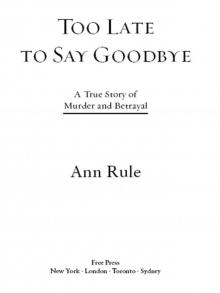 Too Late to Say Goodbye: A True Story of Murder and Betrayal
Too Late to Say Goodbye: A True Story of Murder and Betrayal Green River, Running Red
Green River, Running Red Bitter Harvest
Bitter Harvest Dead by Sunset: Perfect Husband, Perfect Killer?
Dead by Sunset: Perfect Husband, Perfect Killer? Lust Killer
Lust Killer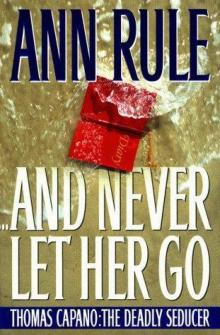 And Never Let Her Go: Thomas Capano: The Deadly Seducer
And Never Let Her Go: Thomas Capano: The Deadly Seducer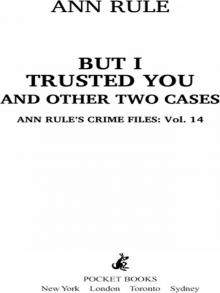 But I Trusted You and Other True Cases
But I Trusted You and Other True Cases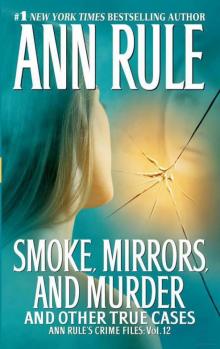 Smoke, Mirrors, and Murder and Other True Cases
Smoke, Mirrors, and Murder and Other True Cases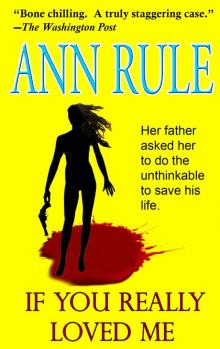 If You Really Loved Me
If You Really Loved Me Kiss Me, Kill Me and Other True Cases
Kiss Me, Kill Me and Other True Cases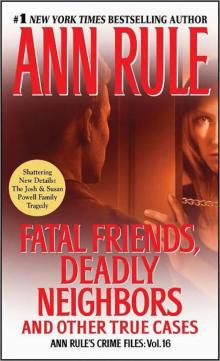 Fatal Friends, Deadly Neighbors and Other True Cases
Fatal Friends, Deadly Neighbors and Other True Cases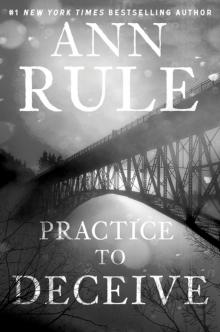 Practice to Deceive
Practice to Deceive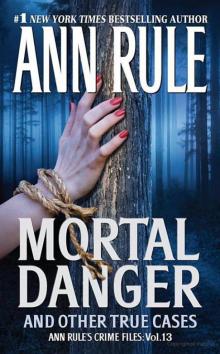 Mortal Danger and Other True Cases
Mortal Danger and Other True Cases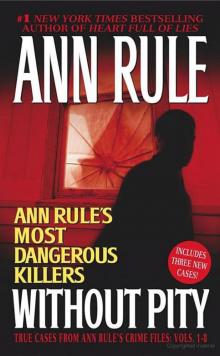 Without Pity: Ann Rule's Most Dangerous Killers
Without Pity: Ann Rule's Most Dangerous Killers Everything She Ever Wanted
Everything She Ever Wanted A Fever in the Heart and Other True Cases
A Fever in the Heart and Other True Cases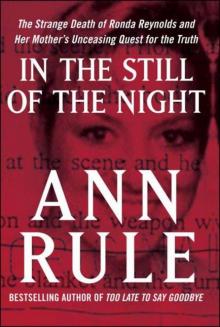 In the Still of the Night
In the Still of the Night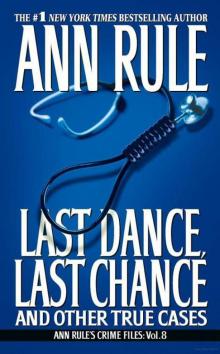 LAST DANCE, LAST CHANCE - and Other True Cases
LAST DANCE, LAST CHANCE - and Other True Cases A Rage to Kill
A Rage to Kill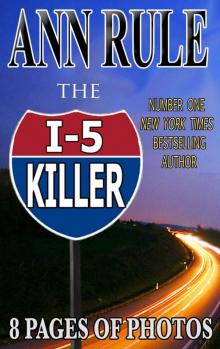 The I-5 Killer
The I-5 Killer The Stranger Beside Me
The Stranger Beside Me Everything She Ever Wanted: A True Story of Obsessive Love, Murder, and Betrayal
Everything She Ever Wanted: A True Story of Obsessive Love, Murder, and Betrayal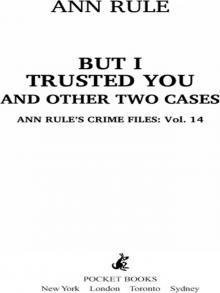 But I Trusted You
But I Trusted You Without Pity
Without Pity Kiss Me, Kill Me
Kiss Me, Kill Me Too Late to Say Goodbye
Too Late to Say Goodbye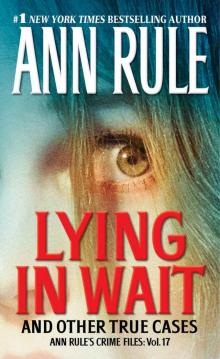 Lying in Wait
Lying in Wait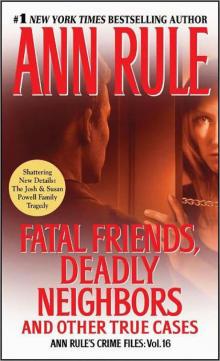 Fatal Friends, Deadly Neighbors
Fatal Friends, Deadly Neighbors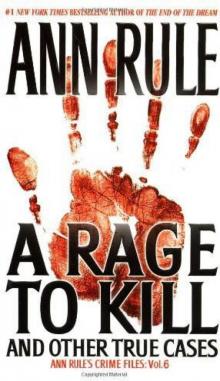 A Rage to Kill: And Other True Cases
A Rage to Kill: And Other True Cases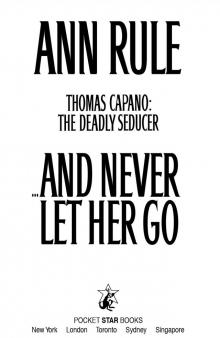 And Never Let Her Go
And Never Let Her Go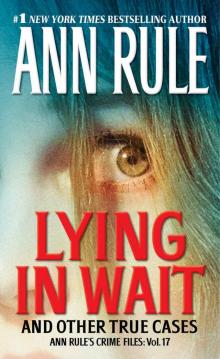 Lying in Wait Ann Rule's Crime Files Vol.17
Lying in Wait Ann Rule's Crime Files Vol.17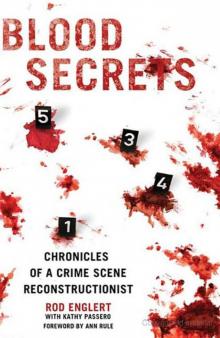 Blood Secrets: Chronicles of a Crime Scene Reconstructionist
Blood Secrets: Chronicles of a Crime Scene Reconstructionist No Regrets
No Regrets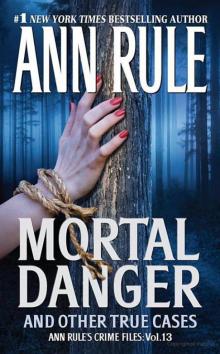 Mortal Danger
Mortal Danger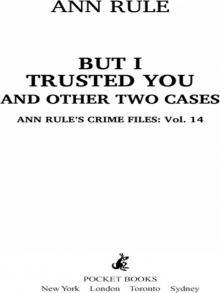 But I Trusted You: Ann Rule's Crime Files #14
But I Trusted You: Ann Rule's Crime Files #14 Empty Promises
Empty Promises Dead by Sunset
Dead by Sunset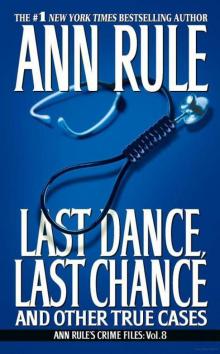 Last Dance, Last Chance
Last Dance, Last Chance Don't Look Behind You
Don't Look Behind You